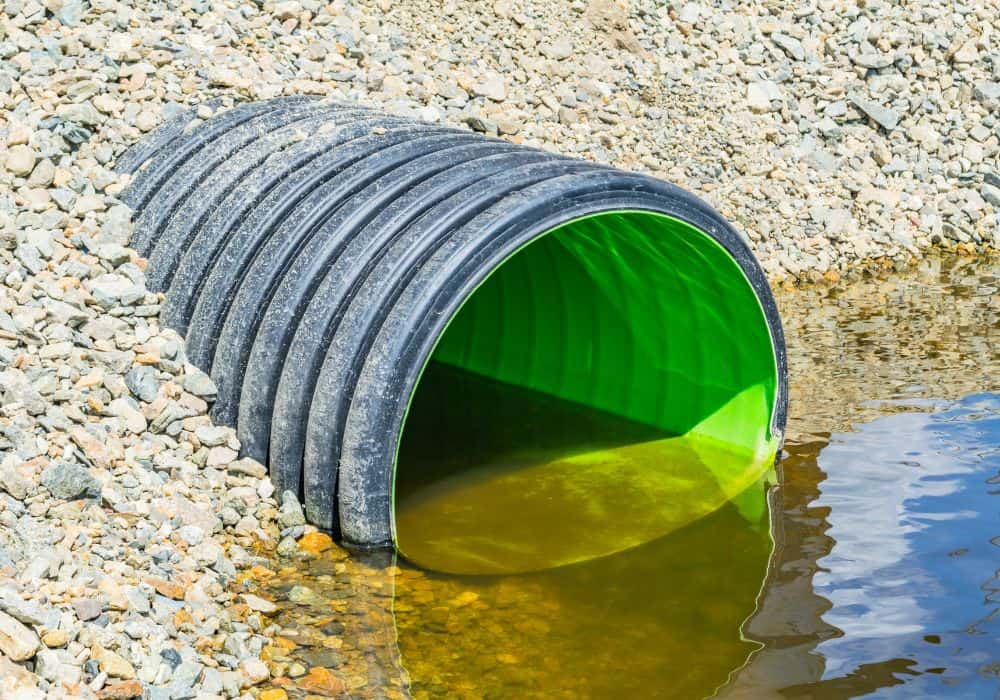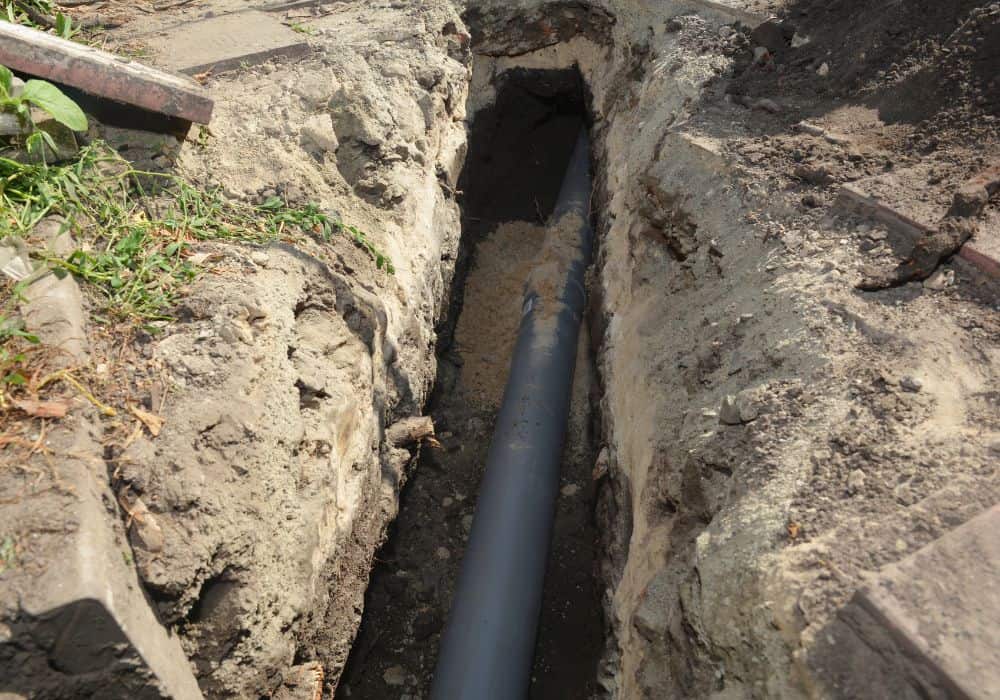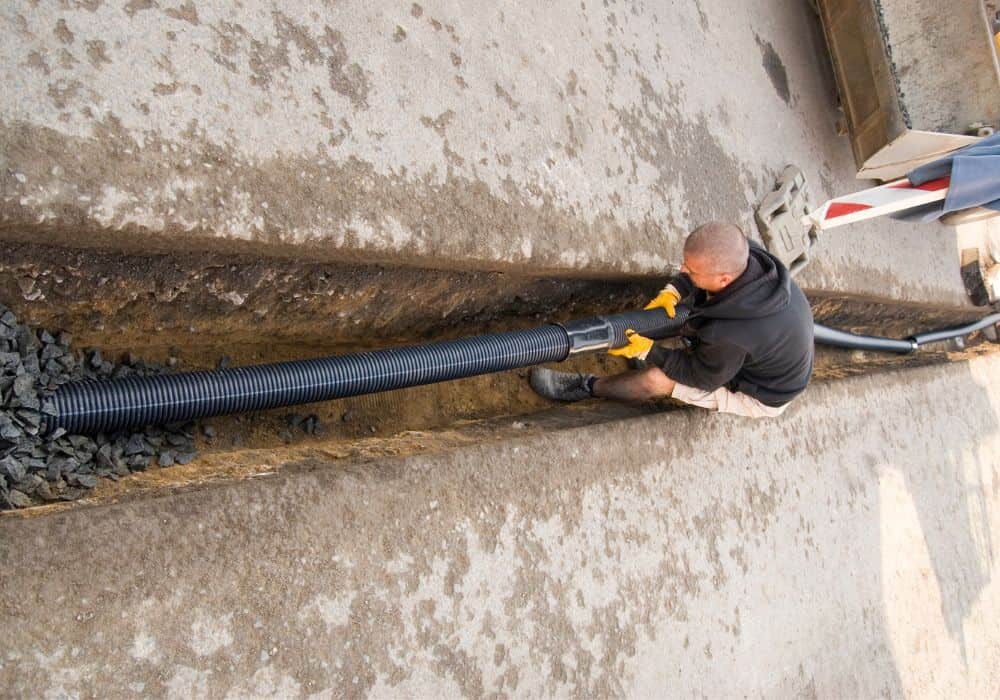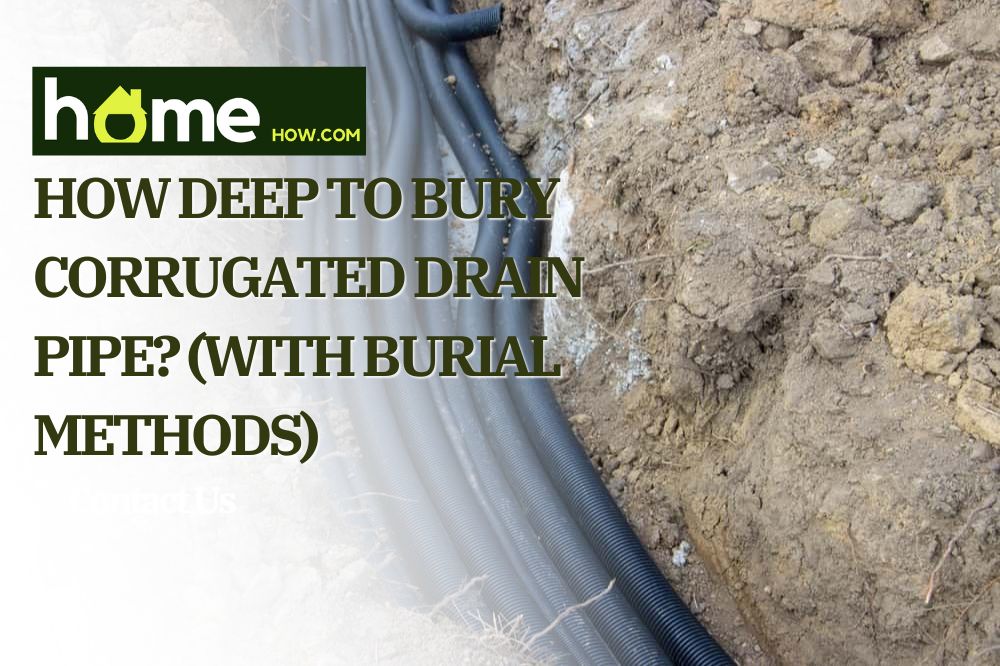Have you noticed areas in your garden that stay wet for a long time after it has rained? This can be a sign of poor drainage that may cause you issues in the long run as the water can get into your basement and cause a buildup of mold and mildew in your home.
You can solve the issue easily by installing a simple underground drainage system, also called a French drain, that protects your home by redirecting the water to another area. In this article, you will find out information on installing corrugated drain pipes and how deep you should bury them to ensure they are functioning effectively.
Read on to find out how to protect your home from excess water using corrugated drain pipes.
What is a Corrugated Drain Pipe?
A corrugated drain pipe has a series of parallel grooves and perforations. They can be made of steel or plastic, for example, polyethylene or PVC. Corrugated pipes are durable, flexible, and strong, which makes them suitable for drainage piping.
Smaller corrugated drain pipes can carry runoff from gutters on the eaves and larger pipes can be used as storm drains and culverts under bridges and next to roads. When the corrugated pipe is buried, its structure is supported by the soil surrounding it. The soil acts as a compression around the pipe and reduces stress on it.
What Do You Need to Consider When Burying Corrugated Drain Pipes?

When you bury corrugated drain pipes, they need to withstand environmental conditions. You need to consider the pH of the soil and the electrical resistance when using corrugated steel pipe. A plastic corrugated pipe can tolerate a wider pH range and because it is not a conductor, the electrical resistance is not a factor.
You also need to consider if you need a coating or a lining inside the pipe to improve the flow of material through it. This is because the corrugation on the inside of the pipe can cause friction and debris can get trapped in the ridges. Some corrugated pipes are already smooth on the inside, which eliminates the need for lining.
The final thing to consider is the area you are installing your drainage system. In heavy traffic areas, it is advisable to bury the pipe deeper than, for example, a backyard that is not accessed by heavy vehicles or machinery.
Benefits of Corrugated Drain Pipe
Corrugated pipes are durable and have a long life span. When using corrugated plastic pipes, their tight joints prevent holes and leaks. Plastic corrugated pipes are also highly resistant to chemics, acids, and other corrosive substances.
Corrugated pipes are easy to handle and transport, and the installation process requires minimal human resources. The pipes are recycled when they reach their lifespan and no toxins are released into the environment when they are installed for private use.
When to Use Corrugated Drain Pipe?
Corrugated pipe is commonly used for gravity flow water management. They can be used to, for example, drain excess water from your garden, for subsurface drainage, and sanitary sewers.
They can be used to form a simple drainage system where the pipe is embedded in a gravel-lined trench to transfer water away from problem areas. Sometimes rainwater can run towards the house, which will cause issues unless redirected using buried drainage pipes.
How Deep Should You Bury Corrugated Drain Pipes?

The depth of the trench for your corrugated drainage pipes depends on the pressure of the water coming down, the natural slope of the property, and whether you plan to grow vegetation above it.
If the area is completely flat, the minimum depth is usually 3-4 inches from the top of the pipe. For example, if you were burying a 4-inch pipe, and left another 4 inches of soil on top of it, your trench would be 8 inches deep. This will ensure the pipe has the minimum cover required to function properly.
Some people will recommend digging a deeper trench, especially if you live in an area where winter temperatures regularly drop below freezing. A deeper trench will protect your pipe better from frost. The recommended depth is 14 to 24 inches deep depending on the type of pipe, its diameter, and how cold the winters can get.
You also need to dig a deeper trench for your train pipe if the area is used by heavy vehicles as their weight can damage the pipes if they are too close to the surface
How much sloping do you need?
If you were using a 3-inch pipe, the general rule is a minimum of an eight of an inch drop per foot of a run. How does this look in practice? Using the pipe with a 3-inch diameter as an example, the total drop for an 8 feet run would be one foot. You would start with a 6-inch deep trench and finish with a 7-inch deep dig.
What if Your Property is on a Slope?
If you are not on a flat piece of land, you may need to adjust the measurements to ensure your corrugated drainage pipe does not alternate between positive and negative grades. Having too much slope is not a concern, but not having enough is.
If your drainage system doesn’t have enough gradient, this can lead to drainage problems such as freezes and clogs.
How to Bury a Corrugated Drain Pipe
Now that you know the depth of the trench, you can dig your trench by following the steps below.
Step 1: Mark the path
Start by marking out the path for your pipe. You can, for example, use a can of spray paint. Orient the pipe away from any nearby structures. If you have a large garden, you may need to dig several trenches for your drainage system.
The trenches and pipes do not need to connect. You can even use different pipe diameters in different trenches depending on how much groundwater you need to redirect via each pipe.
Step 2: Dig the trench
Dig a trench deep enough for your pipe using the guidelines given above. Remember the French drain depth depends on the diameters of your pipe. It needs to be deep enough to leave around 4 inches of dirt cover above the pipe. Your trench needs to be wide enough to fit the pipe at the bottom of the trench comfortably.
Step 3: Leave The Low End Exposed if Possible
If possible, leave the end of your French drain pipe exposed to allow for better drainage. You can achieve this, for example, by having it exit through a side of a hill into a natural valley. When this is not possible, you will want to bury the outlet close to a storm drain or in softer soil.
Step 4: Pound the dirt
Before you put the pipe down in the trench, you need to pound the soil at the bottom of the trench. This will ensure that the ground is stable and prevent it from settling into a different slope.
Step 5: Add Gravel
Next, add gravel to the bottom of your trench as this will give you better drainage.
Step 6: Install The Pipe
When the gravel is ready, you can cut the drain pipe to the desired length and lay it at the bottom of the drench. Add more gravel, at least two inches on top of the pipe before covering it with soil.
Ensure that the holes of your perforated drain pipe are facing downwards. If they face upwards, they will not absorb water until it has risen above the top of the pipe.
How to Fix Problems with Your French Drain Installation?

If you notice that the surface water is no longer draining away, it is likely the pipe has become clogged. To solve the problem and get your French drain system working properly again, follow the steps below.
- Locate the clog. There is usually bubbling on the surface at the point of the clog. Remove the soil where the clog is located.
- Most clogs are at transition points or elbows and you may be able to unclog them by hand. Disconnect the pipe and remove the material causing the clog. There could be harmful items or even animals in the pipes, so protect yourself. Do not reach further than two feet into the pipe.
- If you cannot remove the clog by hand, use a jet stream from a hosepipe to flush out the clog.
- Reconnect the pipe and cover it with gravel and soil again.
Conclusion
As you can see, the calculations to work out how deep to bury corrugated drain pipes are straightforward. The key things to remember are:
- Ensure that you have enough gradient for the water to keep flowing in the desired direction.
- Leave at least 4 inches of soil on top of the pipe. The soil cover should be more, between 10 and 20 inches if you live in an area where temperatures regularly fall below zero.
- Install your perforated pipe with the holes facing down for the best drainage.
As long as you bury your pipe deep enough, depending on the use of the land and climate, your water-diverting projects will be successful and you no longer need to worry about damage to your house during heavy rains.
Still have questions about how deep to bury corrugated drain pipe? Ask us by writing your questions in the comments section.
